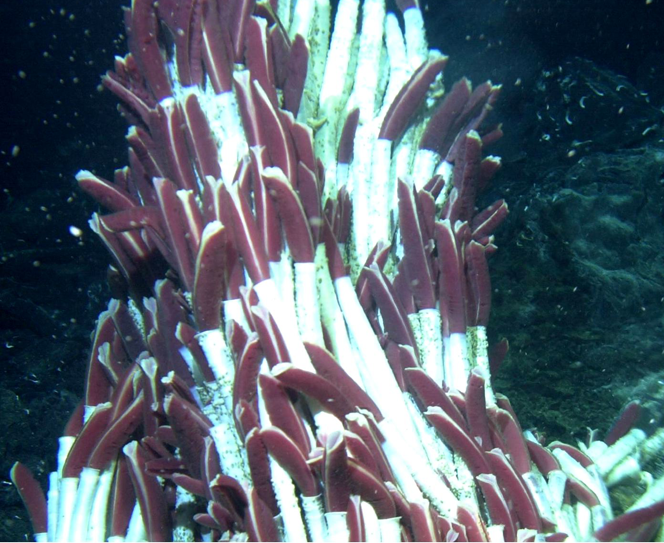A battle under the sea brings up iconic images;
sharks and whales and other large animals fighting for their lives. However,
this battle occurs deeper than what these animals could reach; roughly one mile
below the ocean to be specific. In the deep darkness of the bathypelagic, a war
is happening…a microbial war. It’s been recently discovered that viruses are
attacking hydrothermal bacteria with one goal, their stores of sulfur.
A typical hydrothermal vent
(Photo credit: NOAA)
Bacteria
and viruses have been enemies for as long as both have existed, but this is
anew an interesting front in these battles. Deep-sea hydrothermal bacteria are
still very unusual and not very well-known, and this is the first time that
this sort of virus-bacteria relationship has been seen, since chemosynthetic bacteria
are a rare lot.
So,
why do these bacteria target the sulfur in these bacteria? Well, the answer
lies in the viruses’ desire to reproduce; turning the bacteria into a virus
factory in a sense. What they do is they will force the bacteria to consume all
of its sulfur reserves, and then use the resulting energy to create as many viruses
as possible. The bacteria will inevitably die from this process, releasing all
of the newly created viruses into the open to repeat the process.
Interestingly
enough, this sort of relationship has been seen before, namely in the shallow
ocean water. There is a similar virus that target photosynthetic bacteria in
order to reach the same end goal. So, it’s interesting to see the parallel
between the two viruses, especially when it comes to their mechanism for
reproducing.
So,
what are researchers doing about this? Well, currently Gregory Dick, a
University of Michigan microbiologist and oceanographer, and his team are
currently analyzing the DNA of the bacteria and viruses in order to better
understand the mechanism of this invasion. After collecting samples from the hydrothermal
vents found near the Gulf of California and the Western Pacific, Dick has begun
taking a look at the DNA samples he’s gathered, and believes he may have found
what the virus is doing.
Dick
and his team believe that the virus is targeting the SUP05 genes found in the
bacteria. This comes as no surprise to Dick, as the SUP05 genes are responsible
for creating the proteins necessary to use sulfur to create energy. By targeting
this gene, the virus can overexpress it, forcing the bacteria to burn through
its supply of sulfur faster than it would ever need to naturally.
Riftia pachyptila, a polychaete typically found around hydrothermal vents have an organ with chemosynthetic bacteria instead of a gut.
(Photo credit: Wikimedia Foundation)
So,
what does this mean, what can be gained from this research? Well, Dick believes
that this shows that these viruses are actually very important in the long term
survivability of these bacteria. Dick and his team believe that these viruses
act as “agents of evolution”, allowing for gene transfer between the
chemosynthetic bacteria, a theory first proposed about photosynthetic bacteria
found in the shallows by David Garrison, a program director for the National
Science Foundation. Without these viruses, the bacteria would rarely receive
gene transfer, and a disease could cause catastrophic damage to the bacterial
population, which could cause an entire collapse of the hydrothermal vent
community, since they rely on these bacteria for primary production.
References:


No comments:
Post a Comment
Note: Only a member of this blog may post a comment.